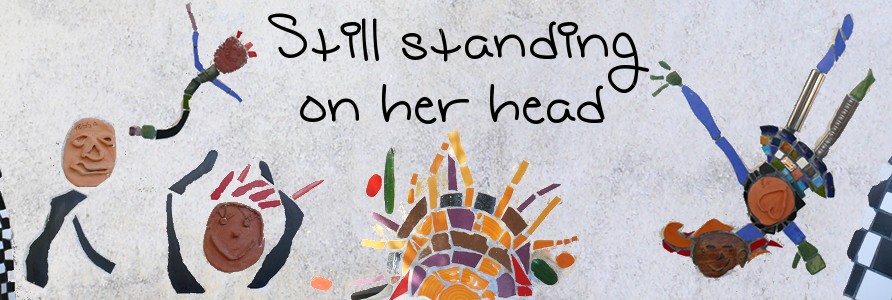Besides meeting my daughter at the coffee and quilt shop last week, I also made time on the Saturday (that's the one just over a week ago) to attend Craft 2.0. This is an indie craft event that has been going on in Wellington for a while, every 3 months, but it was the first time it's been held in Christchurch.
I had fun looking at all the stalls. The sock monkeys particularly made me smile. Someone else had the neat idea of using old Mills and Boon books as covers for blank journals. There was handcrafted jewellery and much else. Many of the crafters also sell their work at Felt - just click if you'd like to take a look.
I can't help feeling that there's something fundamentally contradictory about craft shows like this though. I didn't take anything away except a bunch of business cards. There was a stall selling "World Sweet World" magazine which is aimed at The problem is that most of our spending is on essentials - food, transport, power, basic clothing. I love making things. If I make craft items, it is not just to get something unique, but also because I believe more than half the benefit of handcrafting is in the actual process of making - the creativity of the design decisions, the relaxation of handwork (studies show that sewing and knitting lower blood pressure), etc
Once people start to try to make a living from selling handcrafted items, all you have is an invitation to buy highly priced goods (because face it, labour in New Zealand costs a lot more than labour in China), and generally it is stuff that you don't really need. Of course there is room in our lives for a few beautiful things, just for their beauty, but if they are well-crafted and long-lasting, there's a limit to how much we can collect. I think there are way too many crafters around for the potential market (or anyway, for the size the market should be if we are to save the planet).
The sock monkeys have the same problem as the quilts I make. The pattern was originally designed during the Depression years so that mothers could make their children a toy out of old discarded socks. Now, of course, they are made of new socks, just as my quilts are made of new fabric. Sometimes I wonder why I do it. In my early quilting days, I used scraps left over from the clothes I made, but now we don't seem to make beautiful cotton dresses and shirts any more - most of the clothes sewing I do is either knit fabric (sweatshirts etc) or ball dresses (not really too many of those, but if the daughters have a special event, home sewing is the best way to get a unique dress at a reasonable price). None of those fabrics are very useful for bed quilts.
As for hand crafted journals, they seem to be everywhere these days, but I couldn't bear to use one for fear of spoiling it. The only way to get myself to write is to use basic, cheap exercise books ("notebooks" in the US, I believe). Actually, the paper in the "Mills and Boon" journals didn't look very nice to write on. Though there were some other Japanese fabric covered books that looked amazing.
There were also men's shirts selling for $240, made from vintage bed sheets. Looking at them, I don't think they were the good portions of used sheets - I'm pretty sure they were unused sheets. So why not just use them as sheets - by making shirts of them, a good portion would be wasted. Considering there seemed to be an air of environmentalism conveyed by the event, this is illogical to me.
More links:
World Sweet World magazine, an environmentally focused craft magazine who had a stall at the event
The Craft 2.0 blog (not very well spelled, but they are crafters, not writers!)
Monday, September 01, 2008
Subscribe to:
Post Comments (Atom)



1 comment:
I get where you are coming from. I try to buy my crafting supplies ie wool from charity shops which means I'm recyling and I unravel and reknit. I also made lots of baby blankets recently but they are all an expression of love and there is no way I could offer something which took months and months to make to sell - the price would run into near a couple of hundred pounds for labour. I've been thinking of going back to patchwork but I want to get my fabrics from charity shops - ie buy up old clothes and reuse them. I do fundamentally think buying designer patchwork fabic to make patchwork is competely against the ethos of what patchwork is about in the first place !
Post a Comment